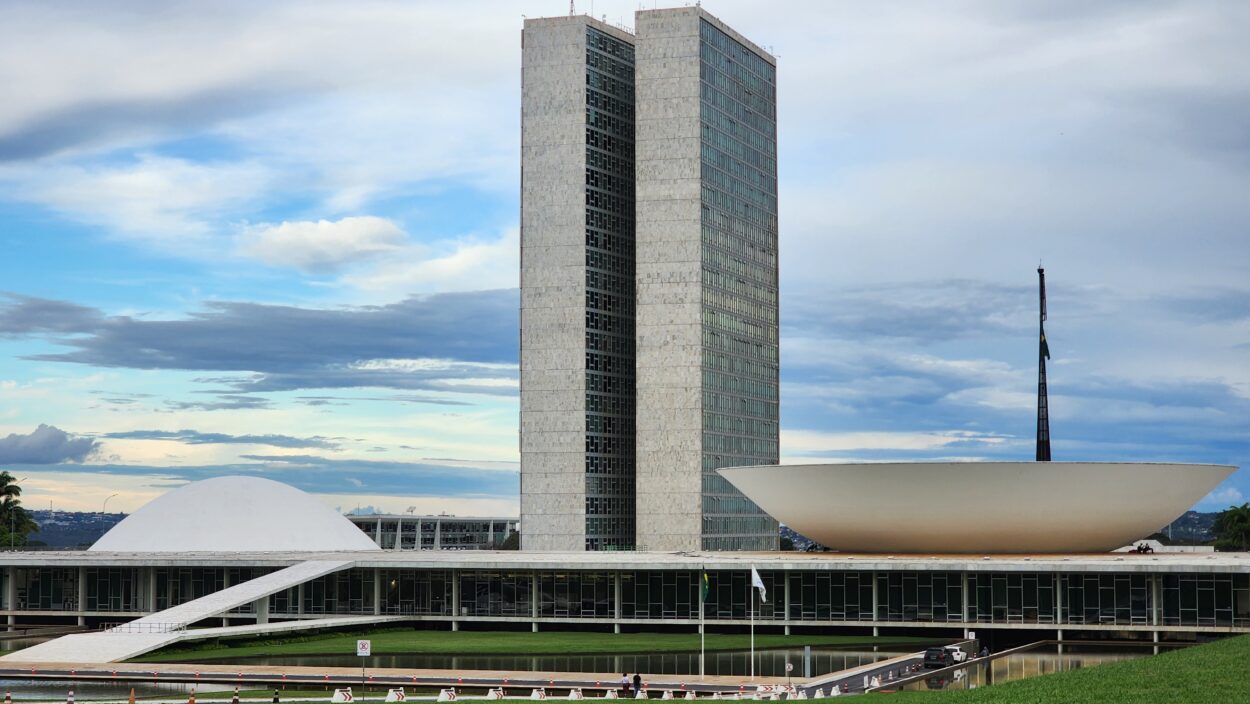
National Congress of Brazil: The iconic twin towers and domes of the National Congress building, symbolizing the balance between legislative chambers. Photo: Felipe Gomes
Most people associate Brazil with the vibrant chaos of Rio de Janeiro, the beats of Salvador, or the never-ending green of the Amazon. Seldom does Brasília pop to mind—and I grasp that. Born and raised here, I have been asking the same questions repeatedly: “Is Brasília worth a visit?” “Isn’t it merely a city rife with government structures?”
There is, however, a quiet beauty in Brasilia which you can’t get anywhere else. Although it does not try to wow you on first sight, this is a city that unfolds slowly and with purpose, much like a narrative only indigenous people would know how to narrate. Brasília provides something uncommon in the modern travel industry: room to relax, contemplate, and see another side of Brazil with its wide open skies, daring architecture, and serene pace.
From an insider’s viewpoint, I want to let you in here on what makes Brasília special. If you are wondering about safety, not sure about what to do, or just asking if this capital will fit into your Brazil itinerary, I wish this will enable you to look at the city from the perspective of someone who knows it well and adores it more every year.
What Makes Brasília Unique Compared to Other Cities in Brazil?
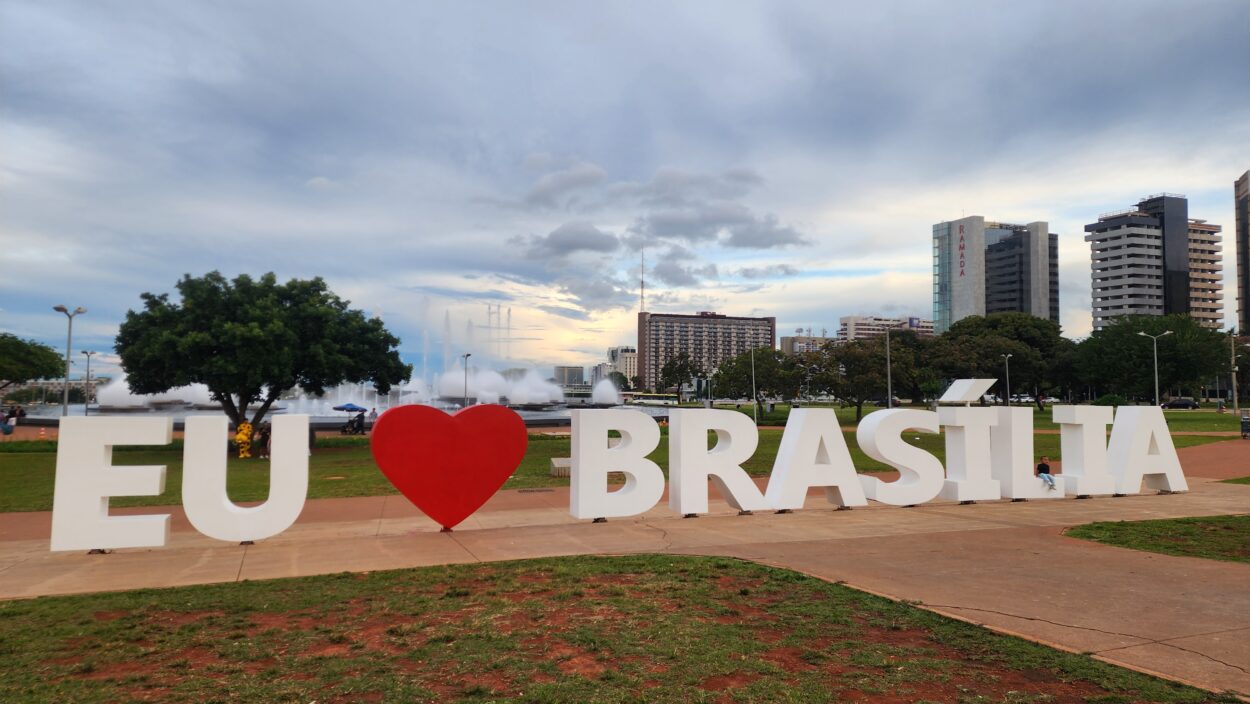
I ❤️ Brasília” sculpture near the iconic TV Tower Fountain, a popular photo spot capturing the city’s pride and skyline. Photo: Felipe Gomes
Brasília does not look exactly like any other Brazil city or even— feel like it does. It is not wild like São Paulo or tropical and beachy like Rio. It doesn’t distract the eyes and ears. Brasília is rather silent. Large. Deliberate And this is precisely what renders the subject so captivating.
Growing up here, I always sensed Brasília spoke a different language—cultural as well as architectural. Envisioned as a symbol of a new Brazil, it was started from the ground up in the late 1950s. Urbanist Lúcio Costa conceived the whole city and Oscar Niemeyer’s daring, forward-looking architecture brought it to reality. From above, the city quite literally looks like the form of an aircraft or a bird; this is a metaphor for vision, flight, and advancement. Most cities do not have this.
Brasília was created with symmetry and space in mind rather than the natural sprawl of many capital cities. The roads are spacious, traffic runs freely, and there is a daily rhythm that seems almost meditational. Rather than busy streets, open skies, great green spaces, and a sort of urban tranquillity that astounds many visitors prevail.
The design is certainly one of the top attractions. The Cathedral of Brasília, the curves of the Palácio da Alvorada, and the minimalism of the National Congress buildings are difficult not to be impressed even if you are not an architecture enthusiast. These are declarations as well as structures. Walking the Monumental Axis feels like entering a mid-century dream that somehow still feels like the future.
Still, the layout of Brasília is not all that defines it. One would have difficulty describing the energy of the city. It is a combination of political gravitas and creative independence. People from all over Brazil have moved here for employment since it is the political capital—so you will experience every accent, sample every regional cuisine, and encounter folk with stories from every corner of the country. Remarkably varied, it shows itself over time in layers rather than all at once in the way most hits you.
Brasília’s connection to nature is yet another distinguishing factor. Though entirely urbanized, it is ringed by the cerrado—a particular savannah habitat rich in local plants and fauna. People from the region frequently paddleboard on Lake Paranoá at sunset or drive 30 minutes outside of the city to see waterfalls. Part of the soul of the city is the difference between the natural and the manmade.
To put it briefly, Brasília defies expectations. It does not have beaches, samba on every corner, or jungle excursions around the block, so it is not a location that works hard to win you over promptly. Still, it is deep. It was meant to help you think, breathe, and move differently. If you let it, Brasília will reveal a more genuine and energetic side of Brazil—that will only be more silent than any other location.
Is Brasília Safe for Tourists? What Travelers Should Expect
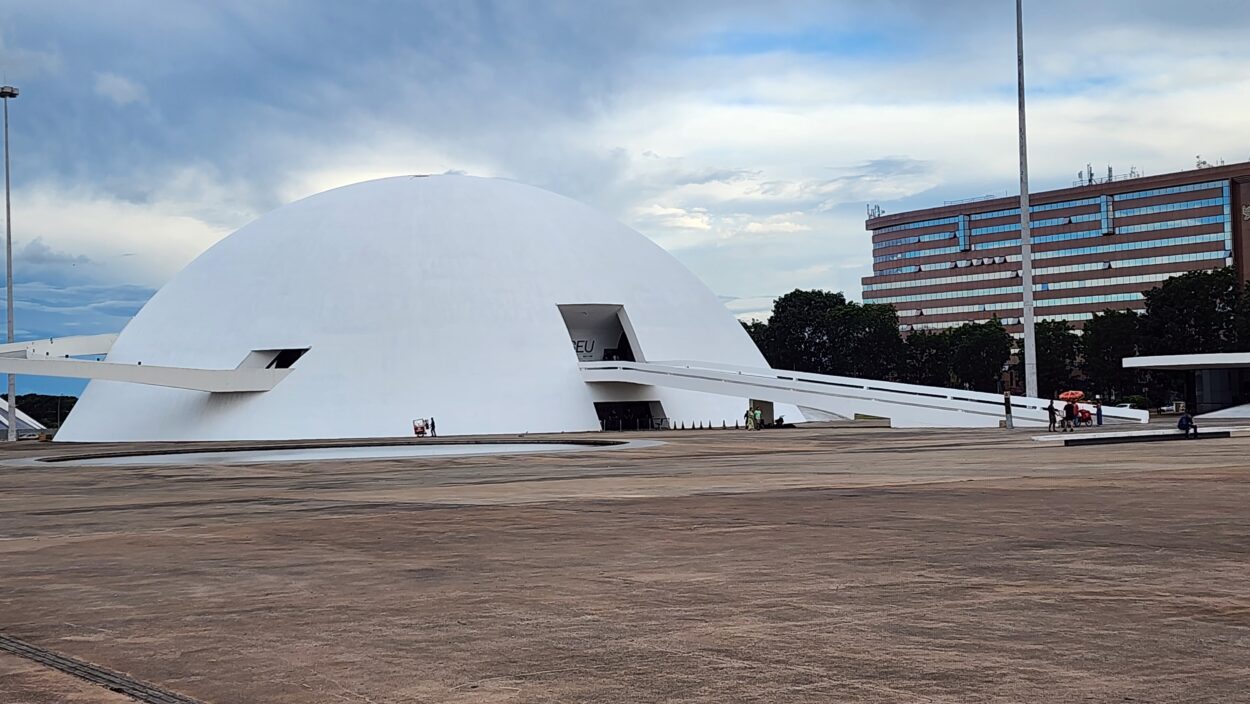
The National Museum of the Republic, designed by Oscar Niemeyer, stands as a striking modernist landmark in Brasília’s cultural heart. Photo: Felipe Gomes
First among the things people ask when arranging a trip to Brazil is safety, which is indeed legitimate worry. The nation, sadly, is known for its criminal activity that can make even the most experienced traveler discouraged. Still, Brasília is unique.
Living here, I can absolutely say that especially when compared to cities like Rio de Janeiro or Salvador, Brasília is one of the safest major cities in Brazil. It is noticeably more tranquil and less stressful than in more thickly inhabited or touristy cities, but that does not make it crime-free.
Brasília was planned with broad open spaces, arranged sectors, and residential areas that are well spaced and simple to explore. Well-kept public areas like the Monumental Axis, the Esplanade of Ministries, and the Cathedral and National Congress surroundings are where most tourist attractions are located. Not only are these sites iconic, but they also tend to be well-lighted, often patrolled, and teeming with residents going about their daily activities, hence a second level of security.
Petty theft can occur especially in packed buses or remote districts late at night, as in every other capital. I always suggest using common sense; keep your phone close, avoid showing costly equipment needlessly, and choose ride-sharing apps like Uber for to get around.
Top Things to Do in Brasília: From Niemeyer’s Architecture to Local Culture
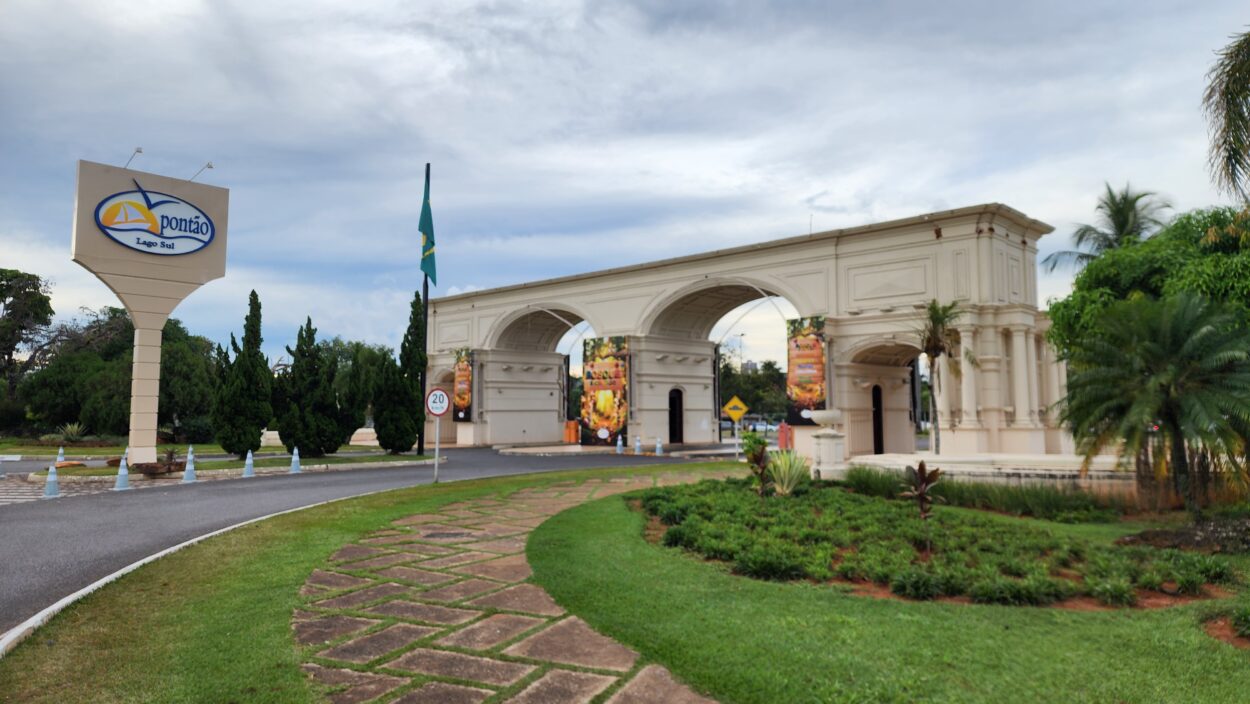
Pontão do Lago Sul: A bustling leisure area on the shores of Lake Paranoá, Pontão do Lago Sul is known for its dining and vibrant atmosphere. Photo: Felipe Gomes
Even if Brasília lacks beaches or rainforest trips, it provides a different sort of wealth based on art, viewpoint, and unexpected cultural depth. The city values the eager, who take time to see beyond the surface and follow the lines of Niemeyer’s vision into daily life.
The Monumental Axis—the main street where many of the most famous buildings stand—is where most people start their exploration of the city. More than just an architectural wonder, the Cathedral of Brasília offers a spiritual experience; it has an interior of amazing stained glass and a crown-like silhouette. Directly across from it, the National Congress buildings soar, their two domes and twin towers representing harmony and equilibrium. Standing surrounded by symmetry and sky, one can hardly help but experience something even if you are not interested in politics or design.
The Itamaraty Palace, which houses Brazil’s Ministry of Foreign Affairs, is not much further down. Open for guided tours, it boasts an excellent art collection and modernist interiors. Located around the pools, sculptures, and floating staircases, this is a superb illustration of the balance Brasília struck between form and function.
Still, Brasília offers more than only official squares and government constructions. Some of the most unforgettable experiences occur in destinations not included on the regular vacation itinerary. Asa Sul or Asa Norte, you will find little coffees nestled among superquadras, informal eateries offering regional variations of pão de queijo, and weekend art fairs where local artists show their works under great mangroves.
After years of urban exploration, one point I have realised—that of a local and one passionate about travel—is how much of Brasilia shows itself gradually. The beauty exists not only in the sights but also in the in-between spaces: strolling paths bordered by indigenous trees, Lake Paranoá sunsets, quiet afternoons at cultural centers such as the CCBB (Centro Cultural Banco do Brasil), where something interesting is always going—whether a movie screening, artwork display, or food truck fair.
Especially with vacationers seeking lower-key, inexpensive, and authentic experiences in cities not usually topping the tourist lists, these are the kinds of travel moments I regularly ponder and share with my audience. Brasília is ideal for this since I have found some of the most satisfying trips result from slowing down, observing the little stuff, and slightly deviating from the main path.
Head up to the TV Tower Observation Deck for a panoramic view of the unusual city layout. It’s free and, on bright days, you can really admire the extent and geometry of the design of the city. The TV Tower Fair, right under it, is a perfect place to find local handicrafts, snacks, and mementoes that really feel significant.
Another popular recreational spot in Brasilia is Pontao do Lago Sul. Weekends see it packed with people sunbathing by the lake, sipping cool drinks, listening to music, and watching sunset scenes. It’s laid-back, chic, and Brasília gets about as close to a beach vibe as it does minus the sand.
In essence, the most effective way to experience the city is to free yourself of the standard attitude. Brasília was not meant to be quickly enjoyed. It entices you to stop, look, and interact not only with sights but with rhythm, schedule, and community living.
A Local’s Guide to Brasília: Where to Eat, Stay, and Explore in Brazil’s Modernist Marvel
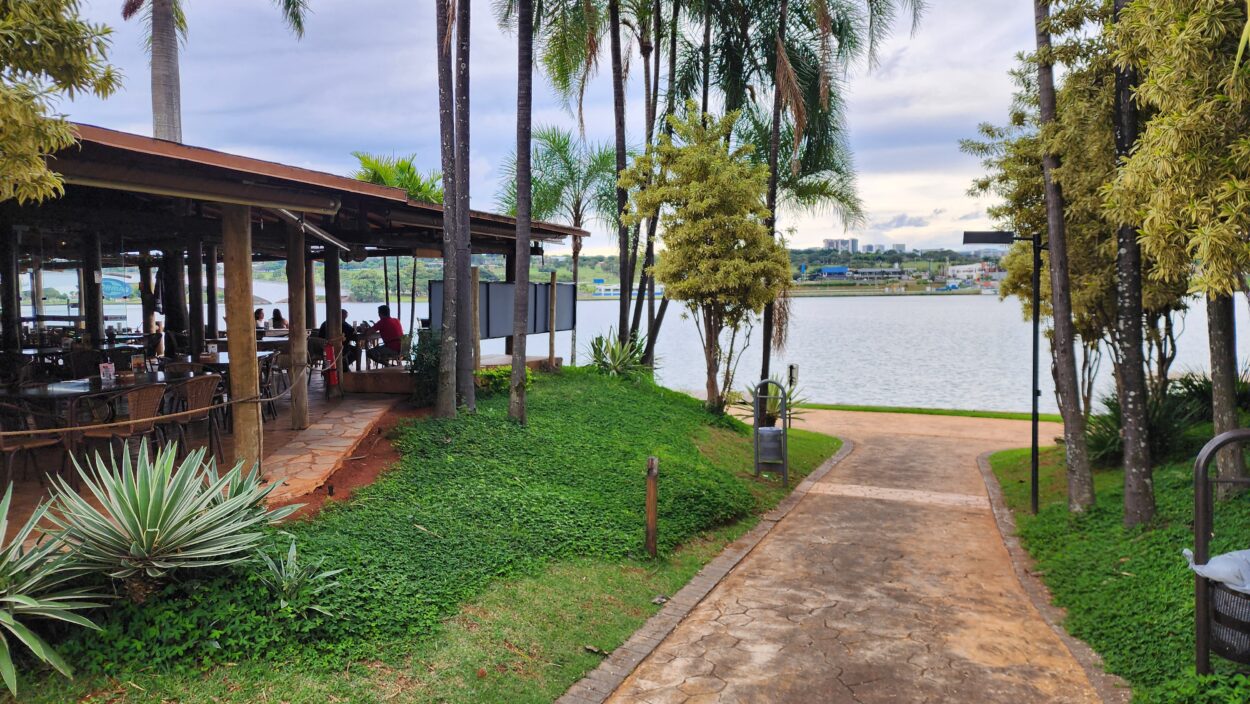
A cozy lakeside restaurant at Pontão do Lago Sul, offering serene views over Lake Paranoá—an ideal spot for a leisurely meal as the sun sets. Photo: Felipe Gomes
One of the top methods to really encounter One should view Brasília as a temporary local rather than just a tourist checking off sights—someone who is interested in how people live here, what they eat, where they unwind after work, and how they connect with the city.
We should first consider accommodations. People visiting Brasília would find Plano Piloto to be the most convenient and delightful location to set themselves. Most of the main sights, eateries, and green areas are found here—the part shaped like an airplane— at the very middle of the city. Asa Sul (South Wing) and Asa Norte (North Wing) provide an ideal mix of local appeal and easy access in Plano Piloto. The neighbourhoods are mostly residential, studding with leafy avenues and hosting some of the best cafés, bookstores, and weekend markets in the city.
In terms of lodging, you’ll find everything from chic boutique hotels to superquadra—Brasília’s characteristic housing blocks—Airbnbs inside. Hotels surrounding the Setor Hoteleiro Norte or Sul are a sure bet if you want something cozy and well located. If you want to explore a little more, they place you close to the metro and within walking distance of the Monumental Axis.
Let us now discuss cuisine. Because Brasília was constructed by people from every part of Brazil, its food scene is extremely wide-ranging. All in one spot, there are local dishes from the South, Northeast, and North. One meal that locals adore — and guests seldom expect — is pato no tucupi, a typical Amazonian duck stew served in some Asa Sul Northeastern or Amazonian eatery spread. And the city has you covered even should you be vegan or vegetarian. Relaxed settings abound with imaginative, tasty meals in Girassol Vegetariano or Empório Árabe.
Ernesto Café in Asa Sul is a quaint local favorite with outdoor seating and a good breakfast menu where you may find good coffee or a laid-back brunch. Belini, a café and bakery that seems more European than Brazilian, is also a superb choice for a laid-back morning or informal gathering. Rubaiyat’s sophisticated Brazilian steaks come with an excellent view of Lake Paranoá for dinner; Mangai serves a full-on Northeastern buffet—bright, filling, and entertaining.
Now as for means of moving about. Though Brasília is famous for its broad streets and automobile-oriented design, this doesn’t imply you are stranded without a car. This is an excellent place for the Uber system, which is very cost-effective in contrast to worldwide norms. By far the most straightforward as well as efficient way of moving between restaurants, hotels, and attractions. One can take public buses, but they are not very traveler-friendly unless one is already familiar with the route. Having said that, the Brasília Metro might be a good choice if you are heading for more suburban neighborhoods or just want to travel farther for less.
Enjoy slow exploration? Head over to blocks 108 or 209 of Asa Norte for some local walking, including green community parks, tranquil coffee houses, and the odd open-air art exhibit. Weekends saw locals frequently visiting the Parque da Cidade, a great urban park where people can run, cycle, skate, and picnic under the cover of century-old trees. Or have a calm, nearly meditative afternoon at Ermida Dom Bosco, one of the city’s premier sunset points viewing Lake Paranoá.
The Museu Nacional da República is a fantastic stop for culture; its displays and the Niemeyer-designed architecture itself— a sweeping white dome that seems more like a spaceship than a museum—both contribute to this. Close by, the CCBB Brasília regularly houses first-rate art shows, theater performances, and movie screenings — several of them complimentary.
Brasília does not amuse via spectacle or surplus. Instead it provides little but cherished events—that which makes you feel like you have discovered something remarkable most people miss. And maybe it best appeals: it celebrates those who are observant.
Final Thoughts: A City That Whispers Instead of Shouts
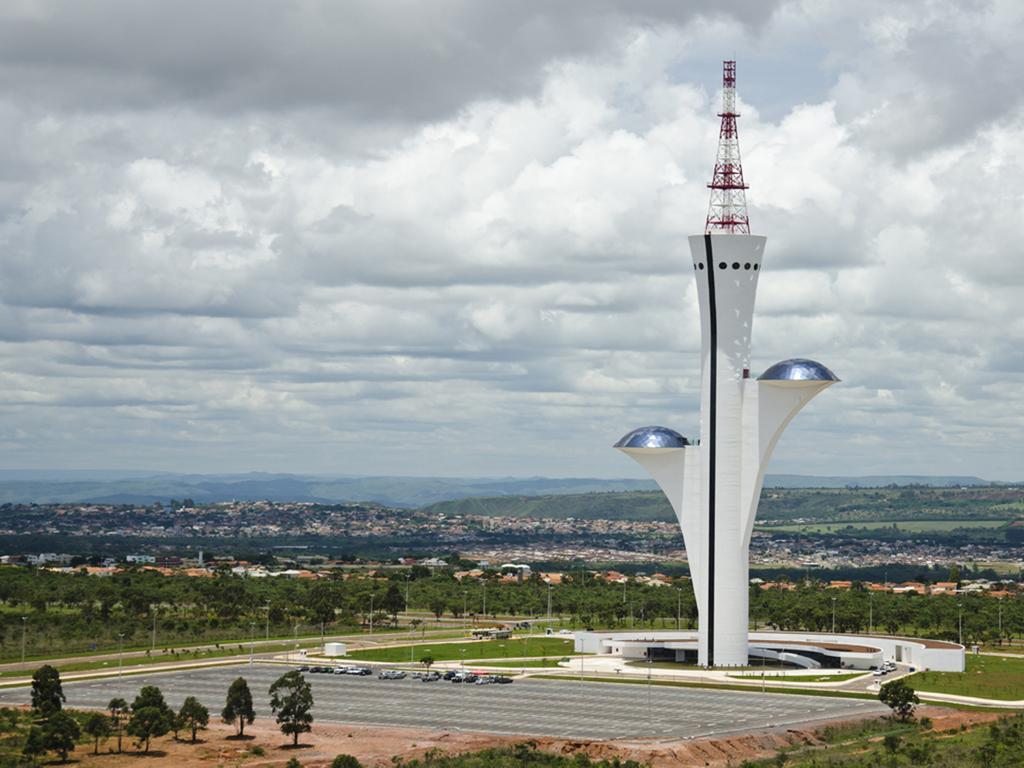
The futuristic Digital TV Tower, designed by Oscar Niemeyer, rises above Brasília’s landscape, offering panoramic views of the city and its surrounding savanna. Photo: Felipe Gomes
Brasília is not the type of city trying to seduce you with noise or show. Down the road, it won’t dance no samba logo na chegada or drag you in with blue sea or loud throngs. There is less volume than that. More intentional. It’s a city that murmurs rather than screams, and it is in those murmurs that you will discover its essence.
Apart from the grand buildings or the urban planning genius behind their design, Brasília is unique for me when I ponder what defines it. It’s the sense of room: strolling under wide blue-skies and listening to one’s own thoughts. It is the tempo of life in an intentionally constructed location. As the sky starts to yellow and the city appears to come to a stop, it is a sunset over Lake Paranoá. And this is precisely the point: sitting in a sheltered corner of Asa Norte, nothing is happening. Thank you for visiting.
Brasília can be very rewarding to those who would slow down, to gaze, and to inquire instead of racing toward the next major destination. Brasília provides a distinctive and unexpected viewpoint for those wishing to know the nation a bit better, not for those seeking the postcard version of Brazil.
Brasília will reveal you a side of Brazil most visitors never see if you approach with curiosity and leave the cliches at the airport.